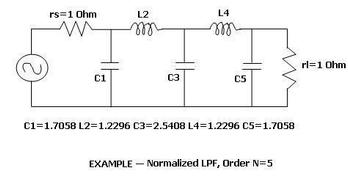
Microstrip Filter Structures: Basics and Types
Explore the basics of microstrip filter structures, including stub-loaded, stepped impedance, and coupled designs.
Showing 20 posts (Page 11 of 20)
Advertisement

Explore the basics of microstrip filter structures, including stub-loaded, stepped impedance, and coupled designs.

Explore the different types of microstrip lines—basic, stripline, suspended stripline, slotline, CPW, and finline—their features, advantages, and applications in RF and microwave circuits.

Explore the variations of microstrip lines, including inverted, suspended, and shielded designs, along with their respective advantages and disadvantages.

Explore microstrip patch antennas for mobile devices. Learn about their design, advantages, and a practical example for GSM, CDMA, and LTE networks.

Explore the fundamentals of microstrip resonators, covering open-end, stub, ring, and dielectric types, along with their applications in filter design.

An overview of microwave coaxial lines, their types, construction, and characteristic impedance, highlighting advantages and disadvantages.

Explore the construction, working principle, S-matrix, and diverse applications of microwave gyrators in RF and microwave systems.

Understand the fundamentals of microwave transmission lines, including types, characteristics, and impedance calculations, essential for RF energy transport.

Explore the design of millimeter wave up and down converters, essential for 5G, satellite, and radar systems. Learn about frequency shifting, linearity, noise, and bandwidth considerations.

A comparison of MIMO (Multiple Input Multiple Output) and SISO (Single Input Single Output) techniques, highlighting their differences in antennas, data rates, and applications.
Explore the advantages and disadvantages of Mioty technology, a Low Power Wide Area Network (LPWAN) solution for IoT, focusing on its scalability, reliability, and limitations.
Explore the hardware and software components of mobile phones, including the RF transceiver, baseband, OS, and connectivity options.
Explore Mobileye's collision avoidance system: computer vision, object detection, and autonomous driving integration. Learn about its benefits and comparison with LIDAR technology.

Explore the process of converting natural gas to electricity, including extraction, processing, power generation, benefits, and drawbacks. Learn about its role in global energy.

Explore Near Field Communication (NFC) technology, covering its functionality, modes, frequencies, applications, tag types, and signaling.

Comparison of ng-eNB and gNB base station types in 5G NG-RAN, highlighting their roles in connecting UEs to the 5G core network.

Explore noise sources in electronic systems and effective noise reduction techniques, from shielding to active cancellation, for optimal system performance.

Learn about nuclear sensors, their types (nuclear particle and solid-state), and their role in monitoring radiation levels for safety in nuclear environments.

Explore the differences between O-MI (Open Messaging Interface) and O-DF (Open Data Format) in IoT for interoperability, their functions, and formats.

Explore key OFDM physical layer measurements like EVM, CCDF, power spectrum, and IQ diagrams for signal quality and system performance optimization in wireless communications.
Advertisement